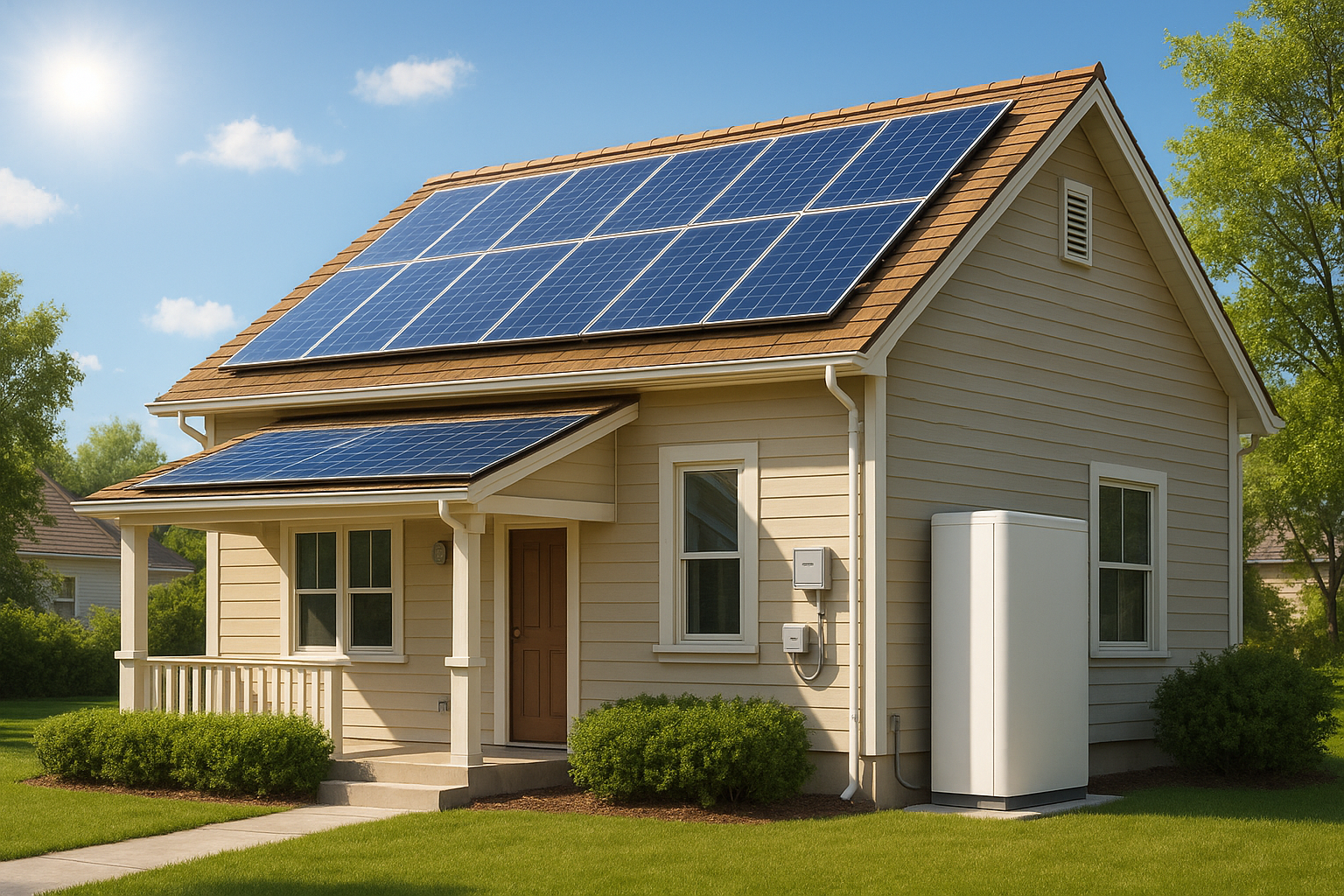Homeownership evolves, and integrating solar energy stands out as a significant enhancement. Beyond immediate utility bill savings, a solar power system can substantially increase a property's market value. This article explores the current and projected trends for solar home premiums in 2025, highlighting key market drivers and addressing regional challenges that homeowners might encounter.

The Growing Value of Solar-Equipped Homes
Understanding the Solar Home Premium
A solar home premium refers to the additional value a property gains when equipped with a solar energy system. This premium goes beyond the direct financial savings from reduced electricity bills. Buyers often recognize the long-term benefits of lower operating costs, enhanced energy independence, and a reduced environmental footprint. This recognition translates into a higher willingness to pay for homes featuring solar installations.
Market Drivers for Increased Property Value
Several factors contribute to the appreciation of solar-equipped homes. Energy independence is a primary driver; homeowners gain control over their electricity supply, mitigating the impact of fluctuating utility prices. Resilience also plays a vital role; during grid outages, a well-designed solar system with battery storage can continue to power essential loads. Furthermore, growing environmental consciousness among buyers makes properties with sustainable features more appealing. Lower maintenance requirements compared to traditional energy sources and the increasing efficiency of solar technology also boost attractiveness.
2025 Solar Market Trends: Opportunities and Challenges
Global Investment and Growth Trajectories
The solar sector continues its robust expansion. Investment in solar PV generation has been setting new records each year, a trend expected to persist in 2023 and beyond. China alone added over 100 GW of solar PV capacity in 2022, a nearly 70% increase from 2021. Europe, India, and Brazil also saw annual installations rise by 40% or more, despite inflation and supply chain issues. While solar PV module prices saw increases in 2021 and 2022, they began to decline in early 2023. This reduction is due to decreasing input costs, such as solar-grade silicon and wafers, alongside expanded manufacturing capacity, largely in Asia.
Even with rising project costs, the levelized cost of electricity (LCOE) for solar PV and wind, despite increasing in 2022, remained a more appealing option for new generation compared to fossil fuel power in most global markets. This sustained cost competitiveness underscores the ongoing financial viability of solar installations for homes.
Policy Support and Its Impact
Supportive policies significantly shape the solar market landscape. In the United States, the Inflation Reduction Act provides substantial financial incentives, including new or extended tax credits for solar PV and storage based on project investment costs and generation. Similarly, the European Union aims to increase renewable deployment, with a provisional agreement reached in March 2023 to raise its renewable target for 2030 to a minimum of 42.5% of final energy consumption, up from the previous 32%. These policy frameworks create a stable environment for solar investment, fostering widespread adoption and enhancing the perceived value of solar homes.
Technological Advancements Enhancing Home Value
Continuous innovation in solar technology directly contributes to higher property value. Modern solar panels offer improved efficiency, converting more sunlight into electricity. The integration of advanced energy storage systems, such as those featuring high-performance, safe, and reliable lithium iron phosphate (LiFePO4) batteries, allows homeowners to store excess solar energy for use during peak demand or at night. This capability significantly increases self-consumption and reduces reliance on the grid, further boosting a home's energy independence.
Addressing Local Gaps in Solar Adoption
Navigating Permitting and Grid Infrastructure Challenges
Despite global growth, local challenges persist. Permitting has been a significant concern for investors and financiers, particularly for wind and grid infrastructure projects. Europe, for example, has seen substantial renewable capacity waiting for permits, with queues extending well beyond set limits. These delays can impact the speed of solar adoption and potentially the realization of solar home premiums in certain areas. Overcoming these gaps requires streamlined local regulations and investment in grid upgrades to ensure new solar projects connect efficiently.
Financing and Accessibility Disparities
Higher interest rates and significant debt burdens can hinder clean energy investment, especially in many emerging market and developing economies (EMDEs). Over 90% of the increase in clean energy investment since 2021 occurred in advanced economies and China. This concentration highlights disparities in financing access. For homeowners, this means that while the overall trend for solar home premiums is positive, local financial conditions and incentives play a crucial role in making solar accessible and attractive, thereby influencing the premium in a given area.
The Benefits of Integrated Energy Solutions
Optimizing Self-Consumption with Energy Storage
Integrating energy storage systems with solar PV is a powerful way to enhance a home's energy profile and value. Battery storage systems effectively increase self-consumption, allowing homeowners to use more of the electricity their panels generate. This capability also reduces reverse power flows into the local grid by shifting produced energy. This means less reliance on grid electricity, greater savings, and increased resilience, all contributing to a higher solar home premium. Our household energy storage systems, which integrate LiFePO4 batteries, hybrid inverters, and solar panels, exemplify this comprehensive approach.
Ensuring Energy Independence with Off-Grid Systems
For properties in remote areas or those seeking complete energy autonomy, off-grid solar solutions offer a compelling pathway to energy independence. These systems, designed for homes, farms, or cabins, provide reliable power without connection to the main grid. Such independence is a strong value proposition, particularly as grid stability concerns grow. It offers unparalleled peace of mind and operational freedom, significantly enhancing a property's long-term desirability.
Smart Inverters and System Efficiency
Solar inverters are vital components, converting the direct current (DC) electricity produced by solar panels into alternating current (AC) for household use. Modern solar inverters offer advanced features, including monitoring capabilities and grid interaction management. High-quality inverters ensure maximum energy harvest from solar panels, contributing to the overall efficiency and reliability of the solar system, which in turn supports the solar home premium.
A Brighter Future for Home Energy
The trajectory for solar home premiums in 2025 remains strong, driven by increasing global investment, supportive policy frameworks, and continuous technological advancements. While local gaps in permitting, infrastructure, and financing require attention, the overarching trend points towards solar energy becoming an increasingly integral and valuable asset for residential properties. Embracing reliable and scalable energy solutions can help homeowners achieve true energy independence and enhance their property's appeal for years to come.





Leave a comment
All comments are moderated before being published.
This site is protected by hCaptcha and the hCaptcha Privacy Policy and Terms of Service apply.